動画ファイルの最適化しようとした際に、以下の不思議な現象が発生しました。下図のInspectorに表示されるサイズ情報の変化はありませんが、ファイルサイズとProfile内のメモリサイズは確かに減少しました。ではInspectorに表示されているサイズはどういう意味でしょうか?
下図の動画ファイルにはScale曲線は含まれていません、今回の最適化処理は浮動小数点の精度を圧縮だけになりました。
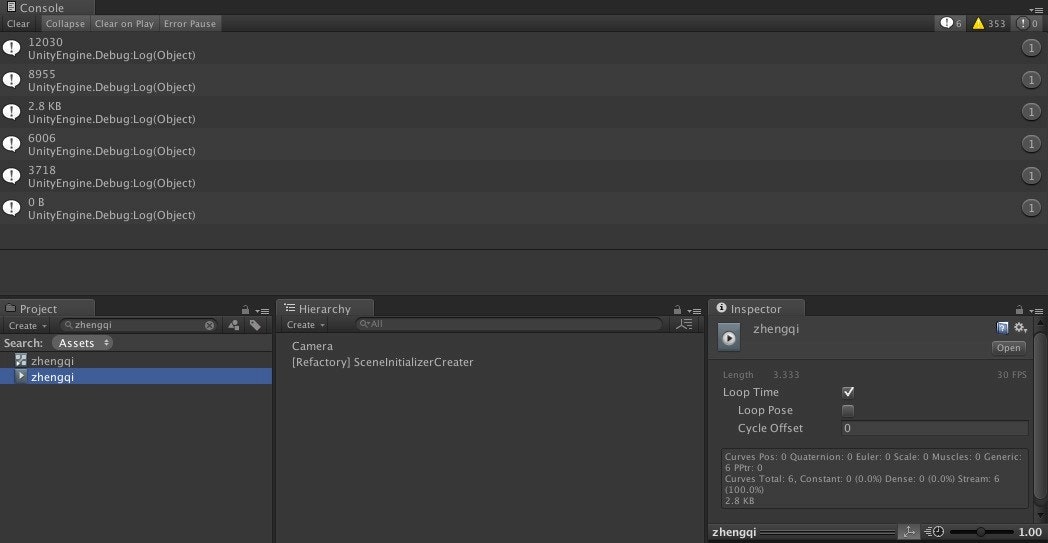
動画ファイルの最適化前後のサイズを比較してみました。
FileSize
FileInfo.Lengthで取得したファイルサイズ
OSのファイルシステムで確認できるファイルサイズ
MemorySize
Profiler.GetRuntimeMemorySizeで取得したメモリサイズ
Profilerでサンプリングして取得しました
それぞれ実機およびEditorでサンプリングしました
BlobSize
反射で取得したAnimationClip.sizeのバイナリーサイズ
AnimationClipのInspectorのパネル上に表示されるサイズ
 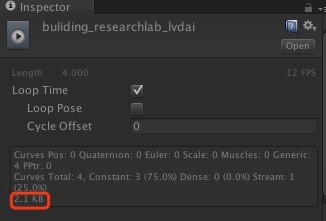
赤枠内はBlobSize,こちらの認識では、FileSizeはそのファイルがハードディスク上に占めているファイルサイズ、BlobSizeはファイルをデシリアライズしたオブジェクトのバイナリーサイズです。Editor内のMemorySizeはシリアライズした後のメモリサイズだけではなく、オリジナルファイルのメモリサイズも一つ維持いしている。これはEditorに一つTextureをロードした際にメモリサイズが二つと同じことです。**しかし、実機ではほぼBlobSizeに等しいです。実機でのMemorySizeとInspector内のBlobSizeは非常に近い、BlobSizeは実機上のメモリサイズと同じと考えてもよい、参考用の価値はあると思います。**
同時に、Scale曲線の取り除く方法にも実験しました。下図の動画ファイルは本来InspectorでのScaleの値は4、つまりScale曲線が存在します。オリジナルファイルのBlobSizeが10.2KB、 Scale曲線を取り除いた後、Blob Sizeが7.4KBに変わったため、BlobSizeが27%を減少しました。
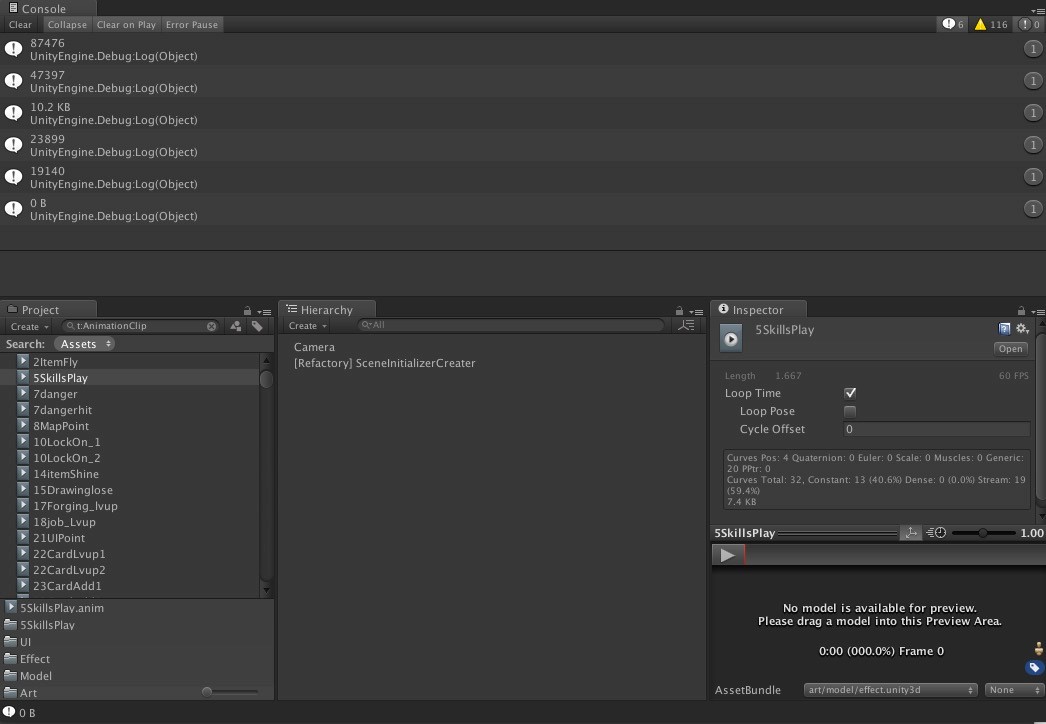

赤枠内はBlobSize,こちらの認識では、FileSizeはそのファイルがハードディスク上に占めているファイルサイズ、BlobSizeはファイルをデシリアライズしたオブジェクトのバイナリーサイズです。Editor内のMemorySizeはシリアライズした後のメモリサイズだけではなく、オリジナルファイルのメモリサイズも一つ維持いしている。これはEditorに一つTextureをロードした際にメモリサイズが二つと同じことです。**しかし、実機ではほぼBlobSizeに等しいです。実機でのMemorySizeとInspector内のBlobSizeは非常に近い、BlobSizeは実機上のメモリサイズと同じと考えてもよい、参考用の価値はあると思います。**
同時に、Scale曲線の取り除く方法にも実験しました。下図の動画ファイルは本来InspectorでのScaleの値は4、つまりScale曲線が存在します。オリジナルファイルのBlobSizeが10.2KB、 Scale曲線を取り除いた後、Blob Sizeが7.4KBに変わったため、BlobSizeが27%を減少しました。

 #### Curveの減少がメモリサイズの減少に繋がります
上述の実験で分かるように、動画ファイルの圧縮精度をカットするだけで、Curveの減少になりません。浮動小数点数はすべて32bitを固定で占められているから、BlobSizeは何の変化もありません。しかしファイルサイズ、ABサイズ、Editor内のメモリサイズは、精度を圧縮後、Curveの変化有無にかかわらず、すべて小さくなります。
#### Curveの減少がメモリサイズの減少に繋がります
上述の実験で分かるように、動画ファイルの圧縮精度をカットするだけで、Curveの減少になりません。浮動小数点数はすべて32bitを固定で占められているから、BlobSizeは何の変化もありません。しかしファイルサイズ、ABサイズ、Editor内のメモリサイズは、精度を圧縮後、Curveの変化有無にかかわらず、すべて小さくなります。
動画ファイルの精度をカットすれば、サンプルの位置も変わるということで、Constant CurveとDense Curveの数量も変わる可能性があります。精度をカットしたことにより動画のサンプルは薄くなりますが、連続の同じサンプルが増えました。だからDense Curveが減少し、Constant Curveが増え、合計のメモリサイズが減少になりました。
Constant Curveは一番左側のサンプルだけで一つの曲線ブロックを表現できる。
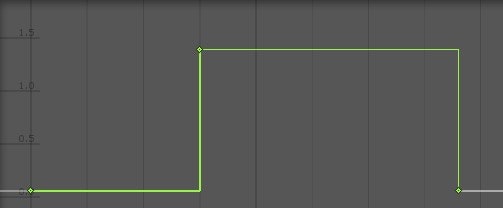
精度をカットのみでBlobSize減少させる実例
精度カット前、サイズは2.2kb、ScaleCurveは0、 ConstantCurveは4(57.1%)、Stream(Optimalモード使用したデータはDenseとして保存される)は3(42.9%)。

精度カット後、サイズは2.1kb、ConstantCurveは7(100%)、Streamは0(0%)。カット後、ConstantCurveを3増加させたが、Stream(Optimalモード下ではDense)は3が減少しました、BlobSizeは0.1kb減少になりました。

ここでわかるように、精度を通じての最適化方法は、その本質は曲線上あまり近い数値(例、相違数値が浮動小数点4桁以降に現れた場合)を直接同じ数値に変えることによって、一部の曲線をconstant曲線に変更し、メモリサイズを減少させることです。
結果
プロジェクトチームからのフィードバックによると、全ての動画ファイルに対して最適化を行いました。それでファイルサイズは820MB->225MB, ABサイズは72MB->64MB,メモリサイズは50MB->40MBになりました。全体的に言えば動画ファイルのscaleが多ければ、最適化を行う効果を得られやすいとのことです。
BlobSizeコード
AnimationClip aniClip = AssetDatabase.LoadAssetAtPath<AnimationClip> (path);
var fileInfo = new System.IO.FileInfo(path);
Debug.Log(fileInfo.Length);//FileSize
Debug.Log(Profiler.GetRuntimeMemorySize (aniClip));//MemorySize
Assembly asm = Assembly.GetAssembly(typeof(Editor));
MethodInfo getAnimationClipStats = typeof(AnimationUtility).GetMethod("GetAnimationClipStats", BindingFlags.Static | BindingFlags.NonPublic);
Type aniclipstats = asm.GetType("UnityEditor.AnimationClipStats");
FieldInfo sizeInfo = aniclipstats.GetField ("size", BindingFlags.Public | BindingFlags.Instance);
var stats = getAnimationClipStats.Invoke(null, new object[]{aniClip});
Debug.Log(EditorUtility.FormatBytes((int)sizeInfo.GetValue(stats)));//BlobSize
ツールのコード
最後にツールのコードと簡単な説明を加えます。最適化を行いたいフォルダーもしくはファイルを選定し、右クリックAnimation->浮動小数点カットおよびScaleを取り除きます。
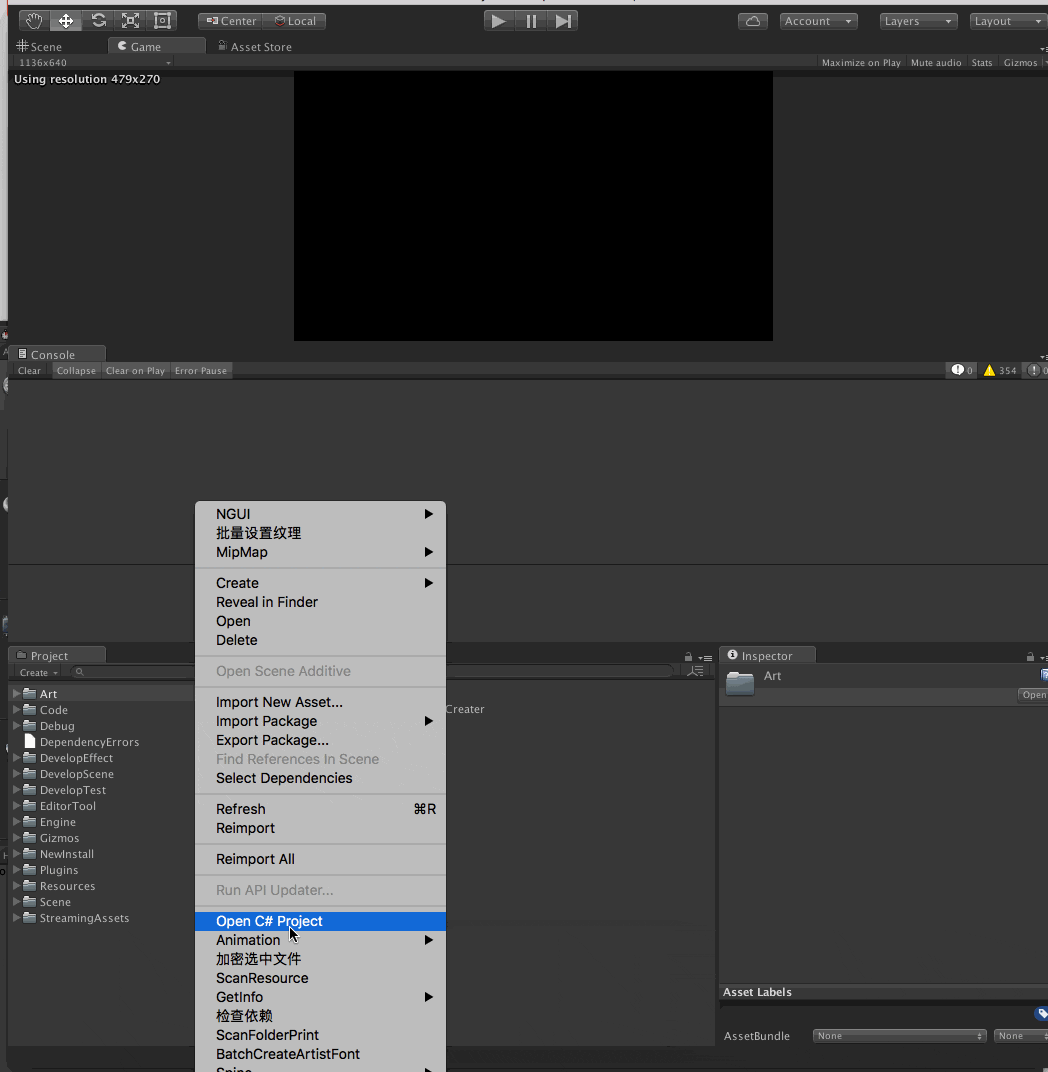
//****************************************************************************
//
// File: OptimizeAnimationClipTool.cs
//
// Copyright (c) SuiJiaBin
//
// THIS CODE AND INFORMATION IS PROVIDED "AS IS" WITHOUT WARRANTY OF
// ANY KIND, EITHER EXPRESSED OR IMPLIED, INCLUDING BUT NOT LIMITED TO
// THE IMPLIED WARRANTIES OF MERCHANTABILITY AND/OR FITNESS FOR A
// PARTICULAR PURPOSE.
//
//****************************************************************************
using System;
using System.Collections.Generic;
using UnityEngine;
using System.Reflection;
using UnityEditor;
using System.IO;
namespace EditorTool
{
class AnimationOpt
{
static Dictionary<uint,string> _FLOAT_FORMAT;
static MethodInfo getAnimationClipStats;
static FieldInfo sizeInfo;
static object[] _param = new object[1];
static AnimationOpt ()
{
_FLOAT_FORMAT = new Dictionary<uint, string> ();
for (uint i = 1; i < 6; i++) {
_FLOAT_FORMAT.Add (i, "f" + i.ToString ());
}
Assembly asm = Assembly.GetAssembly (typeof(Editor));
getAnimationClipStats = typeof(AnimationUtility).GetMethod ("GetAnimationClipStats", BindingFlags.Static | BindingFlags.NonPublic);
Type aniclipstats = asm.GetType ("UnityEditor.AnimationClipStats");
sizeInfo = aniclipstats.GetField ("size", BindingFlags.Public | BindingFlags.Instance);
}
AnimationClip _clip;
string _path;
public string path { get{ return _path;} }
public long originFileSize { get; private set; }
public int originMemorySize { get; private set; }
public int originInspectorSize { get; private set; }
public long optFileSize { get; private set; }
public int optMemorySize { get; private set; }
public int optInspectorSize { get; private set; }
public AnimationOpt (string path, AnimationClip clip)
{
_path = path;
_clip = clip;
_GetOriginSize ();
}
void _GetOriginSize ()
{
originFileSize = _GetFileZie ();
originMemorySize = _GetMemSize ();
originInspectorSize = _GetInspectorSize ();
}
void _GetOptSize ()
{
optFileSize = _GetFileZie ();
optMemorySize = _GetMemSize ();
optInspectorSize = _GetInspectorSize ();
}
long _GetFileZie ()
{
FileInfo fi = new FileInfo (_path);
return fi.Length;
}
int _GetMemSize ()
{
return Profiler.GetRuntimeMemorySize (_clip);
}
int _GetInspectorSize ()
{
_param [0] = _clip;
var stats = getAnimationClipStats.Invoke (null, _param);
return (int)sizeInfo.GetValue (stats);
}
void _OptmizeAnimationScaleCurve ()
{
if (_clip != null) {
//scale曲線を取り除く
foreach (EditorCurveBinding theCurveBinding in AnimationUtility.GetCurveBindings(_clip)) {
string name = theCurveBinding.propertyName.ToLower ();
if (name.Contains ("scale")) {
AnimationUtility.SetEditorCurve (_clip, theCurveBinding, null);
Debug.LogFormat ("{0}のscale curveを閉じる", _clip.name);
}
}
}
}
void _OptmizeAnimationFloat_X (uint x)
{
if (_clip != null && x > 0) {
//浮動小数点精度をf3まで圧縮する
AnimationClipCurveData[] curves = null;
curves = AnimationUtility.GetAllCurves (_clip);
Keyframe key;
Keyframe[] keyFrames;
string floatFormat;
if (_FLOAT_FORMAT.TryGetValue (x, out floatFormat)) {
if (curves != null && curves.Length > 0) {
for (int ii = 0; ii < curves.Length; ++ii) {
AnimationClipCurveData curveDate = curves [ii];
if (curveDate.curve == null || curveDate.curve.keys == null) {
//Debug.LogWarning(string.Format("AnimationClipCurveData {0} don't have curve; Animation name {1} ", curveDate, animationPath));
continue;
}
keyFrames = curveDate.curve.keys;
for (int i = 0; i < keyFrames.Length; i++) {
key = keyFrames [i];
key.value = float.Parse (key.value.ToString (floatFormat));
key.inTangent = float.Parse (key.inTangent.ToString (floatFormat));
key.outTangent = float.Parse (key.outTangent.ToString (floatFormat));
keyFrames [i] = key;
}
curveDate.curve.keys = keyFrames;
_clip.SetCurve (curveDate.path, curveDate.type, curveDate.propertyName, curveDate.curve);
}
}
} else {
Debug.LogErrorFormat ("現在{0}位浮動小数点をサポートしません", x);
}
}
}
public void Optimize (bool scaleOpt, uint floatSize)
{
if (scaleOpt) {
_OptmizeAnimationScaleCurve ();
}
_OptmizeAnimationFloat_X (floatSize);
_GetOptSize ();
}
public void Optimize_Scale_Float3 ()
{
Optimize (true, 3);
}
public void LogOrigin ()
{
_logSize (originFileSize, originMemorySize, originInspectorSize);
}
public void LogOpt ()
{
_logSize (optFileSize, optMemorySize, optInspectorSize);
}
public void LogDelta ()
{
}
void _logSize (long fileSize, int memSize, int inspectorSize)
{
Debug.LogFormat ("{0} \nSize=[ {1} ]", _path, string.Format ("FSize={0} ; Mem->{1} ; inspector->{2}",
EditorUtility.FormatBytes (fileSize), EditorUtility.FormatBytes (memSize), EditorUtility.FormatBytes (inspectorSize)));
}
}
public class OptimizeAnimationClipTool
{
static List<AnimationOpt> _AnimOptList = new List<AnimationOpt> ();
static List<string> _Errors = new List<string>();
static int _Index = 0;
[MenuItem("Assets/Animation/浮動小数数をカットし、Scaleを取り除く")]
public static void Optimize()
{
_AnimOptList = FindAnims ();
if (_AnimOptList.Count > 0)
{
_Index = 0;
_Errors.Clear ();
EditorApplication.update = ScanAnimationClip;
}
}
private static void ScanAnimationClip()
{
AnimationOpt _AnimOpt = _AnimOptList[_Index];
bool isCancel = EditorUtility.DisplayCancelableProgressBar("优化AnimationClip", _AnimOpt.path, (float)_Index / (float)_AnimOptList.Count);
_AnimOpt.Optimize_Scale_Float3();
_Index++;
if (isCancel || _Index >= _AnimOptList.Count)
{
EditorUtility.ClearProgressBar();
Debug.Log(string.Format("—最適化完了-- エラー数: {0} 合計数: {1}/{2} エラーメッセージ↓:\n{3}\n----------アウトプット完了----------", _Errors.Count, _Index, _AnimOptList.Count, string.Join(string.Empty, _Errors.ToArray())));
Resources.UnloadUnusedAssets();
GC.Collect();
AssetDatabase.SaveAssets();
EditorApplication.update = null;
_AnimOptList.Clear();
_cachedOpts.Clear ();
_Index = 0;
}
}
static Dictionary<string,AnimationOpt> _cachedOpts = new Dictionary<string, AnimationOpt> ();
static AnimationOpt _GetNewAOpt (string path)
{
AnimationOpt opt = null;
if (!_cachedOpts.ContainsKey(path)) {
AnimationClip clip = AssetDatabase.LoadAssetAtPath<AnimationClip> (path);
if (clip != null) {
opt = new AnimationOpt (path, clip);
_cachedOpts [path] = opt;
}
}
return opt;
}
static List<AnimationOpt> FindAnims()
{
string[] guids = null;
List<string> path = new List<string>();
List<AnimationOpt> assets = new List<AnimationOpt> ();
UnityEngine.Object[] objs = Selection.GetFiltered(typeof(object), SelectionMode.Assets);
if (objs.Length > 0)
{
for(int i = 0; i < objs.Length; i++)
{
if (objs [i].GetType () == typeof(AnimationClip))
{
string p = AssetDatabase.GetAssetPath (objs [i]);
AnimationOpt animopt = _GetNewAOpt (p);
if (animopt != null)
assets.Add (animopt);
}
else
path.Add(AssetDatabase.GetAssetPath (objs [i]));
}
if(path.Count > 0)
guids = AssetDatabase.FindAssets (string.Format ("t:{0}", typeof(AnimationClip).ToString().Replace("UnityEngine.", "")), path.ToArray());
else
guids = new string[]{};
}
for(int i = 0; i < guids.Length; i++)
{
string assetPath = AssetDatabase.GUIDToAssetPath (guids [i]);
AnimationOpt animopt = _GetNewAOpt (assetPath);
if (animopt != null)
assets.Add (animopt);
}
return assets;
}
}
}
UWA Technologyは、モバイル/VRなど様々なゲーム開発者向け、パフォーマンス分析と最適化ソリューション及びコンサルティングサービスを提供している会社でございます。
UWA公式サイト:https://jp.uwa4d.com
UWA公式ブログ:https://blog.jp.uwa4d.com